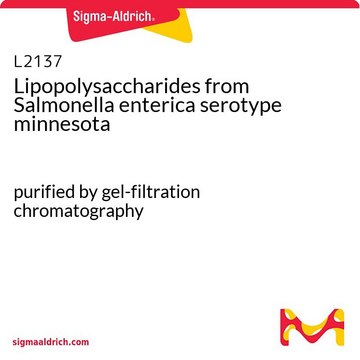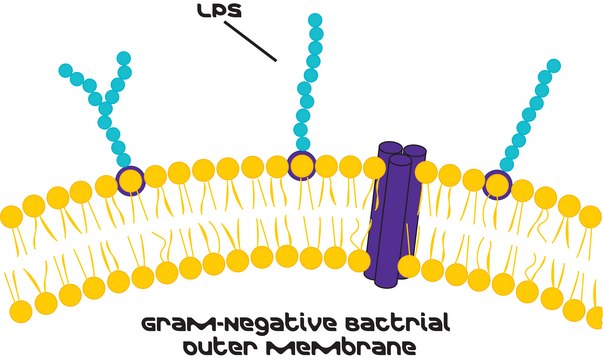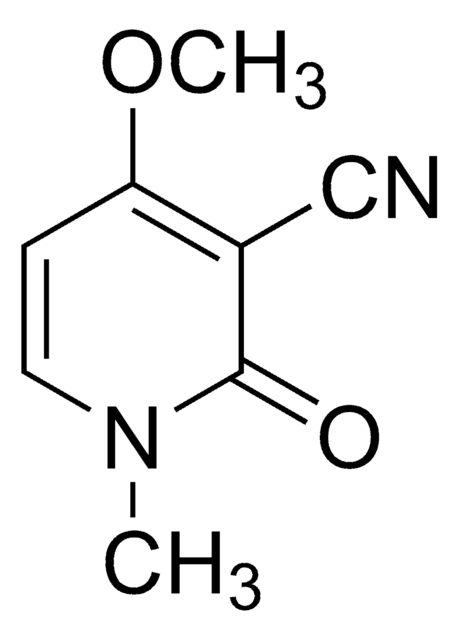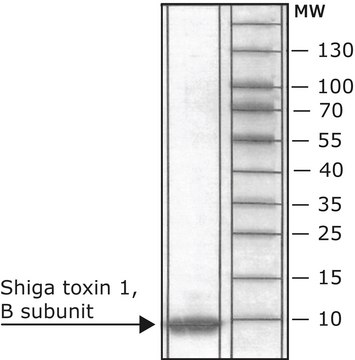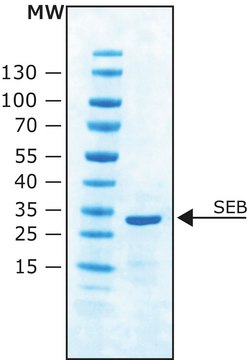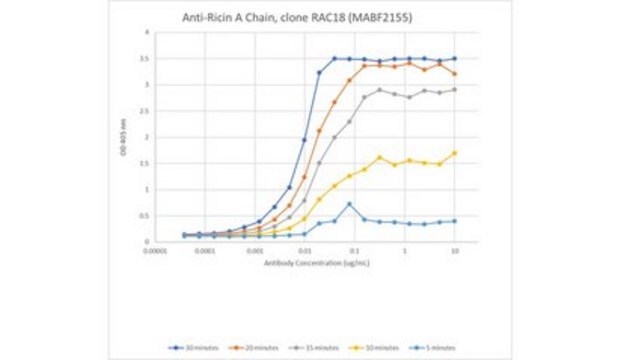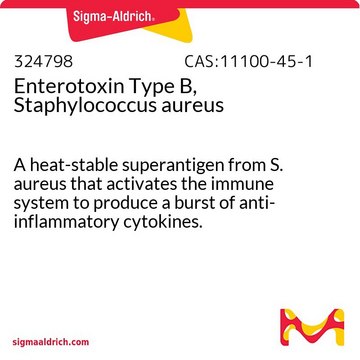L9514
Ricin A chain from Ricinus communis (castor bean)
buffered aqueous glycerol solution
Sign Into View Organizational & Contract Pricing
All Photos(1)
About This Item
Recommended Products
form
buffered aqueous glycerol solution
Quality Level
potency
≥250 μg/mL per mL agglutination activity
composition
Protein, ≥0.3 mg/mL Lowry-TCA
storage temp.
2-8°C
Looking for similar products? Visit Product Comparison Guide
Biochem/physiol Actions
Ricin A chain inactivates the 60 S ribosomal subunit of eukaryotic cells, inhibiting protein synthesis. This toxic activity is independent of the presence of the B chain of ricin.
Other Notes
Ricinus communis toxin (also named RCA60, RCAII, Ricin D, or RCL III) is a highly toxic protein, mol. wt. ~60 kDa, composed of two chains, A and B, connected by a single disulfide bridge.
Quality
Electrophoretically pure (SDS-PAGE)
Physical form
Solution in 40% glycerol containing 10 mM phosphate, pH 6.0, 0.15 M NaCl, 10 mM galactose and 0.5 mM dithioerythritol
Preparation Note
Purified by affinity chromatography.
Analysis Note
Agglutination activity is expressed in μg/ml and is determined from serial dilutions in phosphate buffered saline, pH 7.2, of a 1 mg/ml solution. This activity is the lowest concentration to agglutinate a 2% suspension of human erythrocytes after 1 hour incubation at 25°C.
Signal Word
Danger
Hazard Statements
Precautionary Statements
Hazard Classifications
Acute Tox. 2 Dermal - Acute Tox. 2 Inhalation - Acute Tox. 2 Oral - Skin Sens. 1
Storage Class Code
6.1A - Combustible acute toxic Cat. 1 and 2 / very toxic hazardous materials
WGK
WGK 3
Flash Point(F)
Not applicable
Flash Point(C)
Not applicable
Personal Protective Equipment
dust mask type N95 (US), Eyeshields, Gloves
Regulatory Information
新产品
Choose from one of the most recent versions:
Already Own This Product?
Find documentation for the products that you have recently purchased in the Document Library.
Natália L de Sousa et al.
Journal, genetic engineering & biotechnology, 20(1), 16-16 (2022-01-29)
Castor bean (Ricinus communis L.) is an important cultivated oilseed. Seeds contain ricinoleic acid, a valuable product for a variety of industries. Castor cake is a residue of ricinoleic manufacture and could be used as animal feed due to its
Staci Kane et al.
Journal of immunological methods, 451, 54-60 (2017-09-01)
With several ricin contamination incidents reported over the past decade, rapid and accurate methods are needed for environmental sample analysis, especially after decontamination. A sample processing method was developed for common surface sampling devices to improve the limit of detection
Lisa Fetter et al.
Chemical communications (Cambridge, England), 51(82), 15137-15140 (2015-09-02)
Protein toxins present considerable health risks, but detection often requires laborious analysis. Here, we developed electrochemical aptamer biosensors for ricin and botulinum neurotoxins, which display robust and specific signal at nanomolar concentrations and function in dilute serum. These biosensors may
Ross Thyer et al.
Nature biotechnology, 36(7), 624-631 (2018-06-05)
Incorporation of the rare amino acid selenocysteine to form diselenide bonds can improve stability and function of synthetic peptide therapeutics. However, application of this approach to recombinant proteins has been hampered by heterogeneous incorporation, low selenoprotein yields, and poor fitness
Natália L Sousa et al.
Scientific reports, 7(1), 15385-15385 (2017-11-15)
Ricin is a highly toxic ribosome-inactivating lectin occurring in the seeds of castor bean (Ricinus communis L.). Castor bean grows throughout tropical and sub-tropical regions and is a very important crop due to its high seed content of ricinoleic acid
Our team of scientists has experience in all areas of research including Life Science, Material Science, Chemical Synthesis, Chromatography, Analytical and many others.
Contact Technical Service